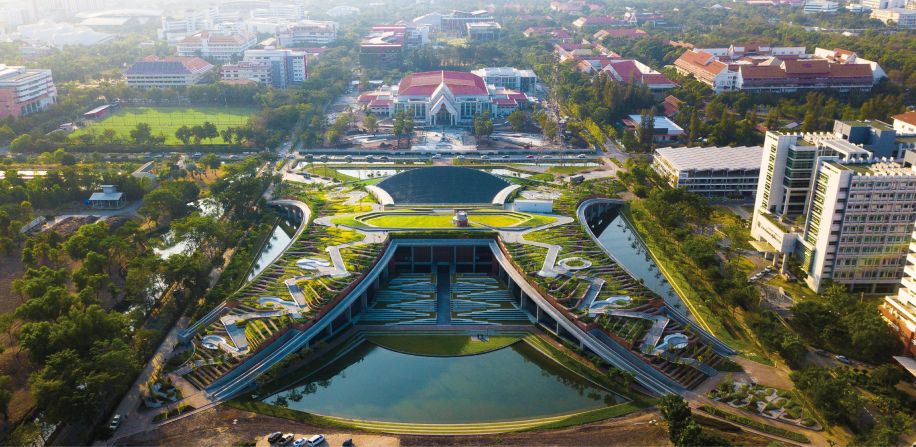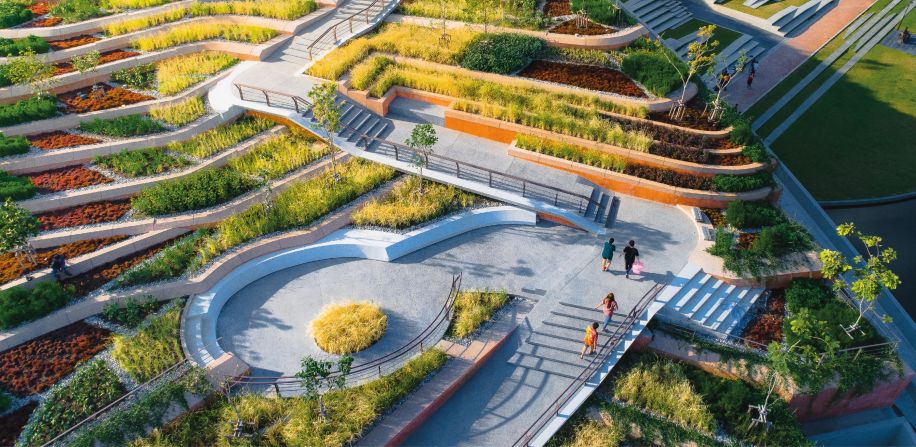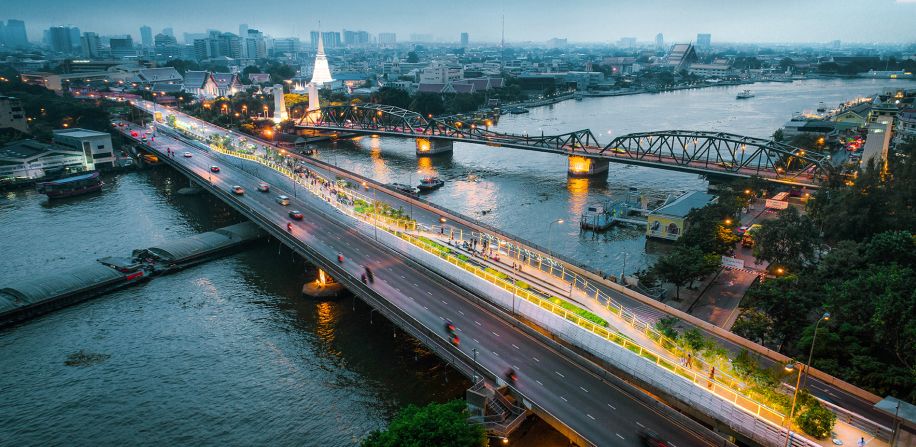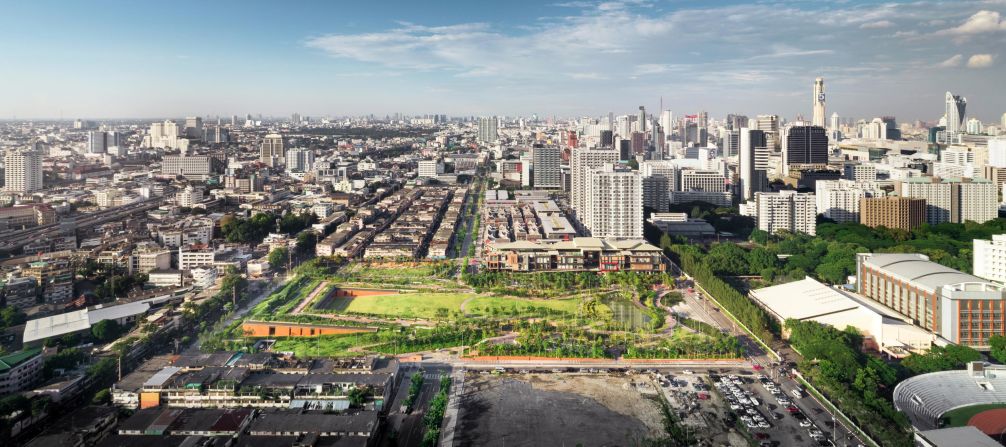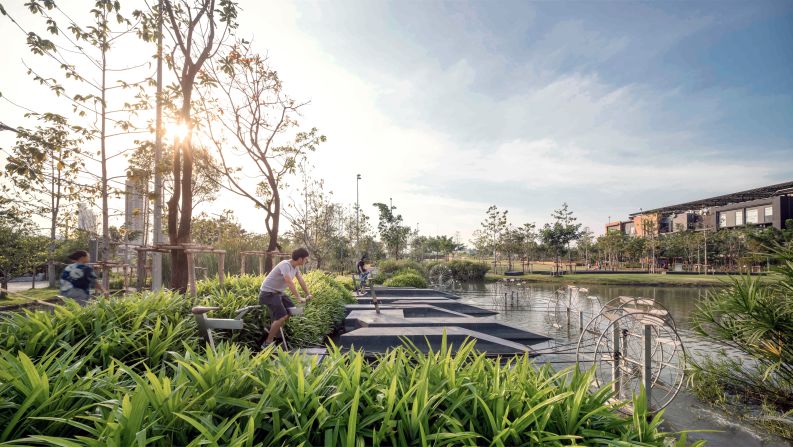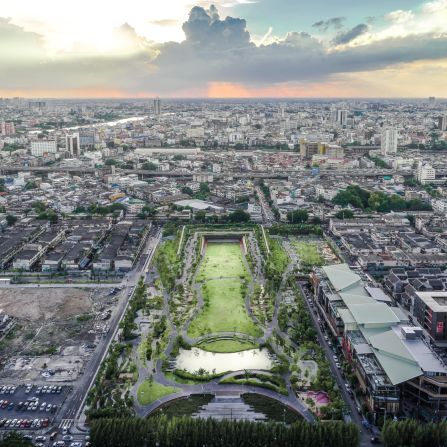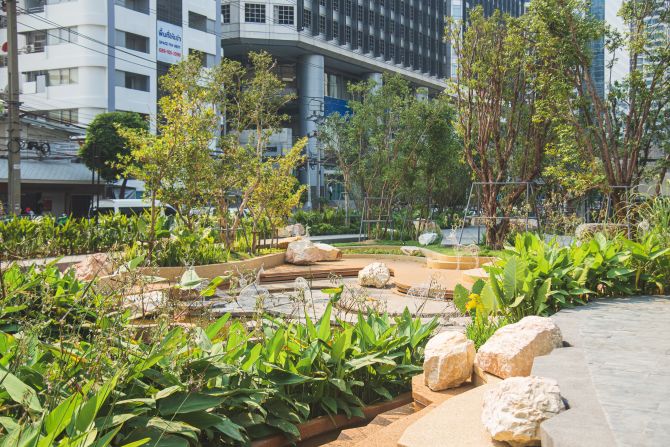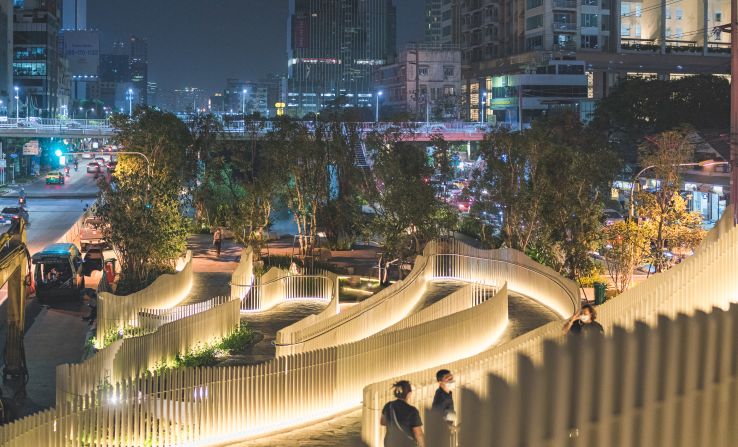When floods devastated Bangkok more than a decade ago, Thai landscape architect Kotchakorn Voraakhom became determined to help her sinking hometown fight this deadly climate threat.
The floods “changed my life,” said Voraakhom, who studied at Harvard University’s Graduate School of Design. “(It was) the turning point, when I started using the tools of landscape architecture (to tackle) climate change.”
The 2011 floods killed hundreds and displaced millions. Out of Thailand’s 76 provinces, 65 were declared flood disaster zones.
“For us, climate change is primarily a water crisis,” she said. “Our people can feel its impacts in their daily lives, each year through worsening floods, rising sea levels, and severe drought.”
A city of water
Bangkok, a city of almost 11 million, is extremely vulnerable to flooding. Situated in the low-lying Chao Phraya River Delta, it sits just 1.5 meters (4.9 feet) above sea level. According to the World Bank, 40% of Bangkok could be flooded by 2030 due to more intense rainfall. The city is already sinking by up to two centimeters (0.8 inches) each year.
In many sinking cities, including Bangkok, the current urban infrastructure is not fit for purpose and is “reducing our ability to adapt (to climate change),” said Voraakhom, noting that many of Bangkok’s waterways and canals have been destroyed or have fallen into disrepair. “We need to fix them and rethink the way we develop (cities),” she said.
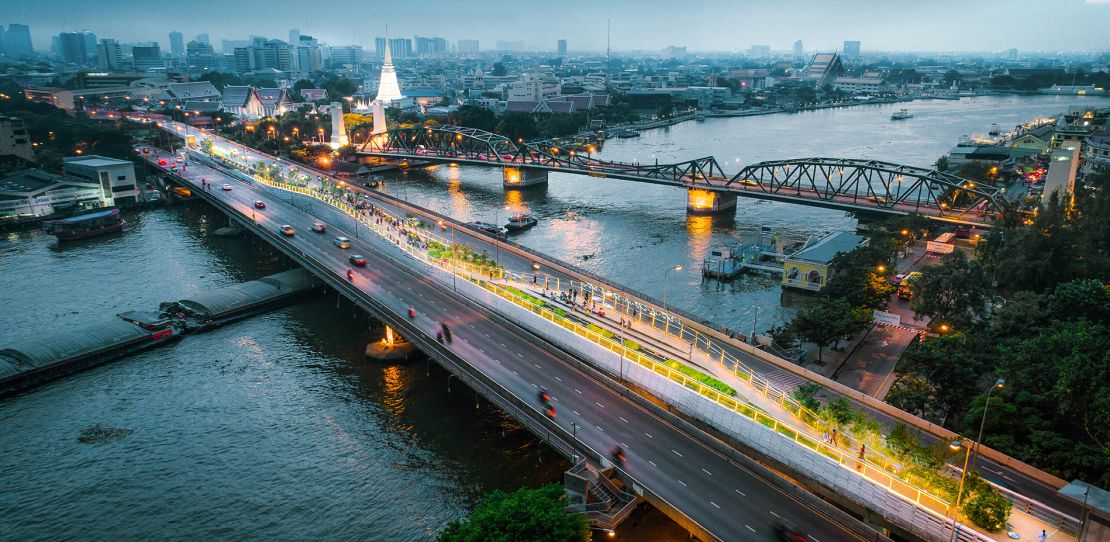
“For us, as a city of water, the only way is to go back to our amphibious culture and reclaim the relationship with water,” she said.
Voraakhom’s iconic projects in Bangkok include a park that can hold up to one million gallons of water, Asia’s largest rooftop farm, an elevated walkway installed on a bridge and a lush canal park in the city center.
The architect said she integrates nature and water into her designs to create landscapes that help alleviate flooding and add greenery to densely populated cities. To date, Thailand has tried to tackle its flooding problem by building “higher and higher dams,” she said, arguing that this is the wrong approach and a solution “based on fear.”
The central question sinking cities like Bangkok need to focus on is: “how are we going to live with the water, without fear?” said Voraakhom. This idea of “living with the water” lies at the heart of her design approach.

A long-term investment
One of Voraakhom’s most innovative designs is Centenary Park, which is built on the campus of Chulalongkorn University in the center of Bangkok.
The park stores large amounts of rainwater and prevents the surrounding streets from flooding. Built on an incline, it directs runoff water through sloped gardens and artificial wetlands. From there, water flows into a retention pond, with a capacity of nearly 480,000 gallons. Beneath the soil is an additional water tank which can hold nearly 160,000 gallons. The entire park can store up to one million gallons of water.
Voraakhom also created Asia’s largest rooftop farm, Siam Green Sky, transforming 22,400 square meters (241,000 square feet) into a lush haven. The farm, which recycles food waste from restaurants in the building below and uses it as plant fertilizer, also slows down, soaks up and stores large amounts of rainwater. It is then used to grow vegetables, herbs and fruit, as well as rice. Inspired by Thailand’s traditional agricultural practices and its rice terraces, the architect created an intricate, layered landscape which allows rainwater to cascade down and soak into the vegetable and herb gardens.
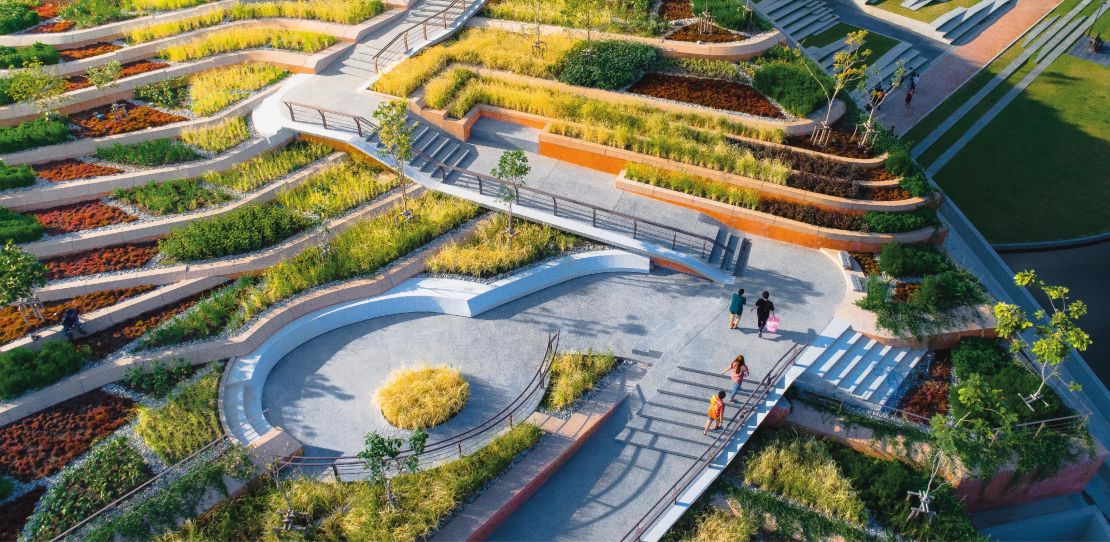
“The most important thing is to (follow) the wisdom of people from the past who used to live with water,” she said in reference to her use of traditional architectural practices.
Bangkok has just over 35.5 square feet of green space per person, compared to New York’s 248 and Singapore’s 710, according to the Siemens Green City Index. Projects that provide residents with green space are vital in a heavily developed and populated city.
According to Diane Archer, a research fellow at the Stockholm Environment Institute in Bangkok, Voraakhom’s urban green spaces are a vitally important contribution to the city’s landscape, and they demonstrate the valuable role that nature-based solutions can play in tackling environmental problems. “Not only are they designed to tackle flooding by acting as water storage spaces, but they contribute to urban cooling, cleaning the air, and providing essential green oases in our concrete jungle, so important for mental and physical health. Even at a small scale, these parks are beneficial to Bangkokians, and we could do with more,” she said.
Voraakhom’s designs and the lessons underpinning her work are now expanding beyond Thailand. In April, she was named designer in residence at Washington University in St. Louis, where she is researching climate-vulnerable sites in the flood-prone city. She is also working with communities to save the Unesco site of George Town in Malaysia from sinking.
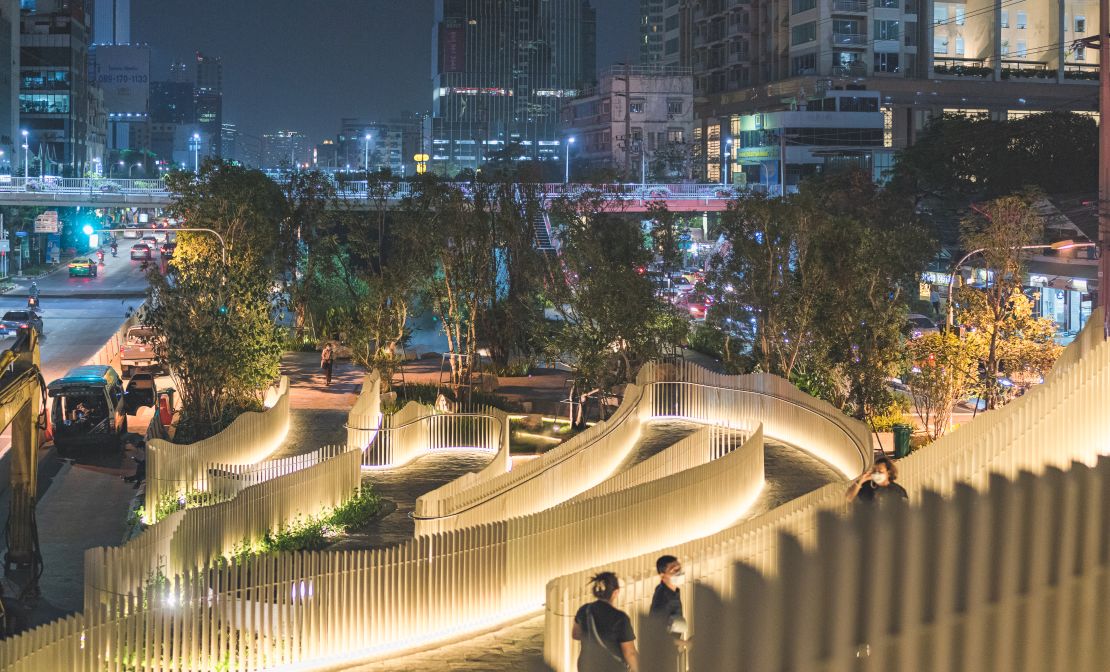
Voraakhom notes that the benefits of her projects extend beyond flood management. The green spaces also help reduce the urban heat island effect and provide public health benefits such as reducing air pollution. City residents also tend to live longer in leafy neighborhoods, according to a study by the Barcelona Institute for Global Health.
“Being resilient is the ability to thrive and to survive,” Voraakhom said. “We have that ability as human beings, but our urban infrastructure does not have it and doesn’t allow us to have it.”
Green, climate resilient areas are a “good long-term investment” for cities, she said, and “the best solution for the next generation.”
